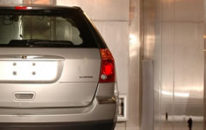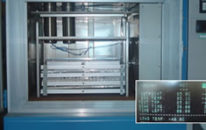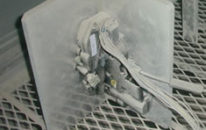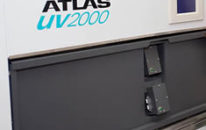Corrosion Testing
The need to produce corrosion testing failures that more closely corresponded with actual field results spurred industry research for a new corrosion testing method. The result of this research was the development of the cyclic corrosion test. A variety of versions of the test have been developed, but they all generally involve cycling the chamber environment between moist and dry conditions.
The salt fog test (or neutral salt spray test) has been used for over 70 years to measure the corrosion resistance of plated or coated metal parts. A large database of testing experience has been accumulated regarding the response of these protective systems to this standardized corrosive environment.
We can perform both the traditional neutral salt fog and the more recent cyclic corrosion test. Cyclic corrosion can be performed either manually or with automatic cycling.
corrosion testing
Corrosion Testing Methods
Salt Fog Test
Temperature Range: 5°C above ambient to +60°C
Largest Inside Dimensions: 1.15m L x 0.76m W x 0.64m H
Door Opening: 1.15m L x 0.76m W
Automatic Cyclic Corrosion Test
Temperature Range: +25°C to +70°C
Largest Inside Dimensions: 1.46m L x 0.82m W x 0.50m H
Door Opening: 1.46m L x 0.82m W
corrosion testing
Corrosion Testing Standards
The detail requirements which describe your corrosion testing project are usually found within standard test methods.
These methods are tailored to meet the requirements of different industries. Testrium’s technical staff are experienced with automotive, rail transport, electronics, military and shipping test methods.
Our corrosion testing services include the following standards
American Railway Engineering and Maintenance-of-Way Association (AREMA)
AREMA Part 11.5.1
ASTM International
ASTM C192 / C192M, ASTM D395, ASTM D4169, ASTM E587, ASTM D999, ASTM D4728, ASTM D4169
BellCore Telcordia
BellCore GR-63-CORE 5.4.2, 5.4.3
British Standards Institute
BS EN 60068-2 Series (-6, 50, 51, 53, 64), BS EN61373, BS EN 50155
California OSHPD Code Application Notice (US)
CAN 2-1708A.5
Defence Standard (UK)
DEF STAN 00-35, DEF STAN 08-123
Institute of Electrical and Electronics Engineers
IEEE 344, IEEE 693, ASCE 7-10, AC 156, GR-63-CORE
International Code Council
ICC AC-156
International Electromechanical Commission
IEC 68-2-59, Test Fe, IEC 68-2-26, IEC 68-2-34, Test Fd, IEC 68-2-35, Test Fda, IEC 68-2-6, IEC 60068-2-64, Test Fc, IEC 61373, IEC 60945, Section 8.7, IEC 60079-29 (-1, 4)
International Organization for Standardization
ISO 1940-1, ISO 10816-1/6, ISO 16750-3
International Safe Transit Association
ISTA 1B, ISTA 1C, ISTA 1E, ISTA 2A, ISTA 2B, ISTA 2D, ISTA 3A (3C,3D), ISTA 3F, ISTA 3G, ISTA 7B, ISTA 7D
Japanese Industrial Standards
JIS D 1601, JIS E 3014
JEDEC Solid State Technology Association
JESD22 B103B
General Motors Worldwide
GMW 3172
Military Standard (US)
MIL-STD- 167, MIL-STD-202 E/F/G (Method 201), MIL-STD-202 E/F/G (Method 204), MIL-STD-202 E/F/G (Method 214), MIL-E 5272, MIL-STD-810 E/F/G (Methods 514, 519), MIL-STD 883 G/H (Method 2005), MIL-STD 883 G/H (Method 2007), MIL-STD 1344 A Method 2005)
Netherlands Standardization Institute
NEN-ISO 10326
SAE International
SAE J575, SAE J1211, SAE J1455, SAE J1810
United Nations Recommendations on the Transport of Dangerous Goods
UN ST/SG/AC.10/11/Rev.5 Para. 38.3.4.3
Verein Deutscher Ingenieure
VDI 2057-1,2, VDI 2059-1,3,4,5cyclic corrosion testing servicescorrosion testing services
More From Testrium

Temperature and Humidity Testing
The temperature inside of a vehicle sitting in the baking sun with the windows rolled up can reach 80°C. Plastic …

Thermal Shock Testing
Thermal shock testing is used to examine the effect of very rapid temperature changes on a product. A typical part …

IP Testing
In electronic enclosures, dust causes cooling systems to clog up and reduces their effectiveness. Enclosures for outdoor or marine …

Solar Climatic Testing
We are one of the few laboratories in Canada to offer Military standard (MIL STD 810F) solar radiation …

